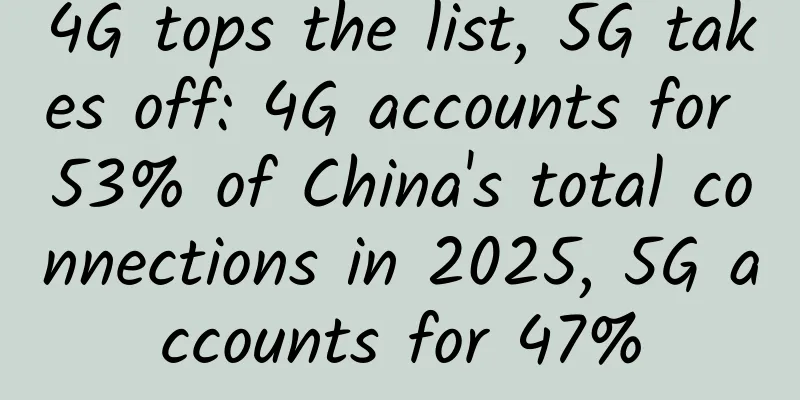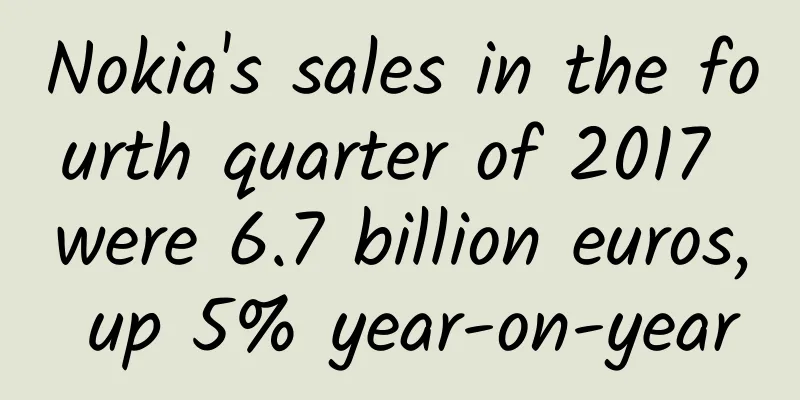4G tops the list, 5G takes off: 4G accounts for 53% of China's total connections in 2025, 5G accounts for 47%

|
On February 23, the "2021 Mobile World Congress Shanghai Exhibition (MWC21)" was held at the Shanghai New International Expo Center from February 23 to 25. The exhibition attracted more than 200 exhibitors from home and abroad, covering telecommunications manufacturers, consumer terminals, wireless technology, security, blockchain, system integrators and other fields. On the eve of the exhibition, GSMA officially released its latest research report "China Mobile Economic Development 2021". The report predicts that by 2025, 4G will account for 53% of China's total connections, while 5G will account for 47%. At the same time, the report recommends that in order to provide protection for the digital transformation of the industry, regulators should provide each operator with 80-100 MHz of continuous spectrum and about 1 GHz of spectrum in the main 5G mid-band (such as 3.5 GHz) and high-band (such as millimeter wave). Do not reserve spectrum for vertical industries in priority bands. 4G has reached its peak, and 5G is gradually gaining momentum The report pointed out that with the rapid popularization of 5G in China, China has become one of the global leaders in 5G applications. In 2020, the region added more than 200 million new 5G connections, accounting for 87% of the world's 5G connections. The expansion of 5G applications in China has benefited from active network deployment and a growing terminal ecosystem. In 2020, despite the outbreak, Chinese operators deployed approximately 600,000 new 5G base stations and announced plans to deploy more in 2021. Meanwhile, 5G networks have covered more than 90% of the population in Hong Kong and Taiwan, making these two markets the first in the world to reach this milestone. The rapid transition to 5G means that China’s 4G adoption has peaked. In 2020, 4G penetration declined for the first time, and will continue to decline in the coming years as more consumers turn to increasingly popular 5G services. According to the GSMA Intelligence 2020 Consumer Focus Survey, Chinese consumers are more eager to upgrade to 5G than consumers in other markets around the world. This is due to the increasing sales share of 5G devices in mainland China: 5G smartphone sales in 2020 were 163 million, accounting for nearly 53% of total smartphone sales. The report predicts that by 2025, 4G will account for 53% of China's total connections, while 5G will account for 47%. For the foreseeable future, the two technologies will jointly dominate China's mobile access networks, and operators are accelerating the shutdown of earlier networks. By the end of 2020, China had 1.22 billion people subscribing to mobile services, accounting for 83% of the country's population. Compared with the global average adoption rate of 66%, China has become one of the most developed mobile markets in the world. However, increasing market saturation also means slower user growth, which is also happening in other developed markets around the world. However, as operators vigorously expand access to digital services, the application and use of mobile Internet continues to grow steadily. "Currently, more than 990 million people in China use mobile Internet services, and this number is expected to increase by another 200 million by 2025," the report pointed out. Support policies for the digital age after the epidemic During the COVID-19 pandemic, society has become highly dependent on communications and digital technologies, which in turn rely on international supply chains and the ability to process personal data and move data across borders. These digital services enable businesses to continue operating under difficult circumstances and enable consumers to access health and education services and participate in social interactions. In the post-pandemic world, policymakers should continue their efforts to protect people’s personal data and facilitate cross-border data flows so that businesses and consumers can continue to enjoy the benefits of digital services. In addition, the report recommends that Chinese operators lead with layered and/or hybrid private networks to ensure the continued digital transformation of various industries. To realize this opportunity, forward-looking policies and regulations are needed, especially in the field of spectrum. To this end, regulators should strive to: Providing each operator with 80-100 MHz of contiguous spectrum, and approximately 1 GHz of spectrum in key 5G mid-bands (e.g., 3.5 GHz) and high-bands (e.g., mmWave). Do not reserve spectrum in priority bands for vertical industries, as this could result in valuable resources being left unused in many areas, limiting the amount of spectrum available for public 5G services, with a direct impact on speed, coverage, and cost. |
>>: When it comes to data transmission, 5G is just the beginning
Recommend
IDC: Global edge computing market will reach $250.6 billion in 2024
Industry data: Gartner conducted a survey and int...
Blockchain cross-domain security solution
1. Evolution of blockchain development Looking ba...
What are the most common "wireless communication (data) transmission technologies" currently?
In recent years, with the development of electron...
5G new call concepts and key technologies
Labs Guide The pursuit of communication technolog...
The three major operators' World Cup rates are released: the lowest is 14 yuan per day with unlimited data
The 2018 Russia World Cup, a football feast held ...
China's operators' semi-annual report: 5G package users close to 500 million
On August 19, China Unicom announced its first-ha...
What is One Network Management? Finally someone explained it clearly
1. Definition of One Network Management Definitio...
Challenges of managing applications
One of the most important lessons that businesses...
5G+ marks the next big shift for Asia’s industry
COVID-19 has been one of the biggest disruptors i...
What Internet speed do smart homes need?
The Internet of Things (IoT) is changing the way ...
Zhang Xianguo of DYXnet: Breaking through with AI-native hyper-connected architecture to safeguard the digital transformation of enterprises
In today's digital era, AI and large model ap...
TmhHost special package 4G memory 388 yuan/year, Los Angeles CN2 GIA/AS9929/Japan Softbank optional
TmhHost currently offers several special annual p...
Do you understand the benefits of 5G? Learn about the pros and cons
We talk about 5G every day, but do you know what ...
Liu Guangyi: Spectrum unification promotes early commercial use of 5G and smooth evolution of 4G networks to 5G
5G has become the focus of major exhibitions, but...



![[Black Friday] DediPath: Dedicated servers in multiple data centers in San Jose/Los Angeles/New York/Dallas starting from $39/month](/upload/images/67cac01eb166c.webp)





